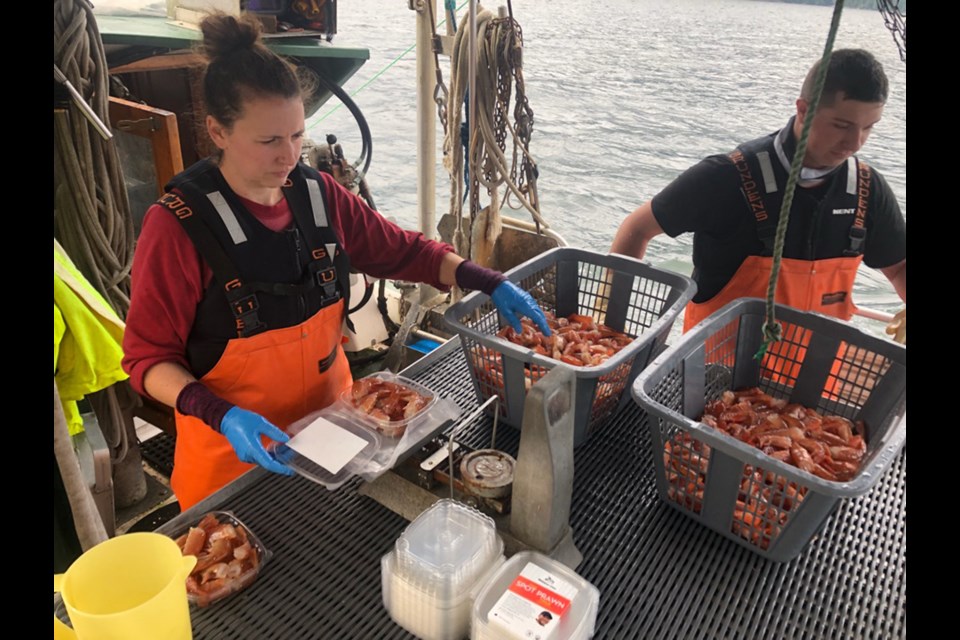Canadians are about to lose access to spot prawns.
But wait, you say, I thought that all got resolved last year? Well, it didn’t. It got forestalled and now Fisheries and Oceans Canada (DFO) has announced new spot-prawn packaging requirements that will double the plastic, triple the labour, and not make the job of inspection one bit easier.
In case you missed it, in March 2021, DFO announced a ban on the 50-year practice of tailing, tubbing, and freezing spot prawns at sea claiming that these prawns no longer met their understanding of being “readily available” for inspection. Why, you ask? Good question.
For over 50 years, prawns have been inspected on boats and in processing plants while they are alive on the sorting tables. If further inspection was required, Conservation and Protection (C&P) officers would pull a few tubs of frozen prawn tails at random and thaw them – it only takes a couple of minutes under cold running water. And so, if this met the definition of “readily available” for 50 years, what changed so drastically to warrant the sudden end to fisher-direct spot prawn sales, devastating an industry already hit hard by COVID and slamming our struggling local food systems?
Is it a conservation issue, you wonder? Actually, no. Prawn size restrictions were not brought in for conservation reasons. They were established to bring up the market value of the product. Spot prawn conservation is achieved through a spawner index, not through size.
Public outcry and 5 hours of hearings at the House of Commons confirmed this new regulation was not a conservation issue, not a problem with enforcement, and in fact DFO had no explanation for it. So DFO agreed to allow the practice of tubbing for 2021 but said they would come up with new regulations for 2022 that would meet their definition of “readily available” for inspection. Still baffling, but at least the industry was able to operate as normal in 2021.
Six months later, when harvesters and industry stakeholders had heard nothing from the DFO, we began writing letters again. And suddenly, last week, the DFO came out with a decision that tubbing could continue but only with a new maximum tub size limit of 250g. This new roughly 8 oz tub is one-third the size of the 24 oz container that is typically used for tubbing one pound of tails.
I wanted to know why DFO thought this was a good idea so I performed my own test by packing prawn tails into a sample 8oz container. The first thing I noticed was the massive waste of plastic. I was only able to fit 6 prawns into this new package as opposed to the 23 prawns that were in the 1lb pack. I did the math and this change will amount to a 100% increase in the amount of plastic waste produced by the industry (take a look in the image gallery above).
But ok, I thought, maybe this means that Conservation and Protection (C&P) officers can inspect the catch without thawing frozen tubs of prawns. So I asked prawn harvester Guy Johnston to help me understand. He explained that to measure a telson, you have to bend the tail at a 90 degree angle out from its body, spread the tail, and use calipers. There is no way you can measure them in a frozen state, no matter what size the package is.
Maybe DFO figures saving one minute to thaw an 8oz tub is worth completely upending an industry and local food systems? I for one disagree.
If you'd like to learn more and offer your support check out our petition.
Sonia Strobel is Co-founder & CEO of Skipper Otto Community Supported Fishery in Vancouver



